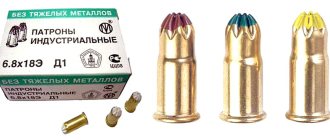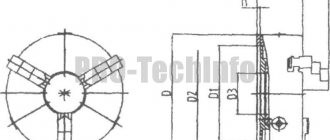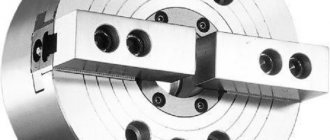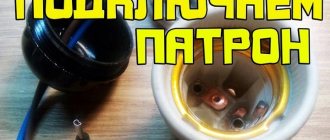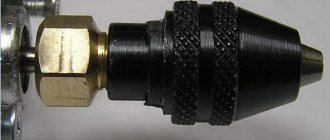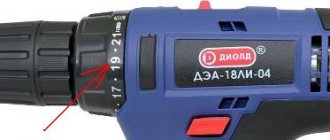The technology used to create and invent firearms was inferior to begin with. However, the creation of a full-fledged single cartridge, the operating principle of which made it possible to get rid of the need to use an open flame source, made it possible to bring it to its modern form.
This technology became so successful that it subsequently began to be used not only in the weapons industry. For example, mounting cartridges used in construction today work on exactly the same principle, although their design has some differences from the original weapon. We will tell you in more detail how construction cartridges differ from ordinary ones and how they can be used.
Select the one you need
Mounting cartridges of the bulletless type fire according to the same principle - when the striker of the pistol strikes the primer, the impact composition located in the cartridge is ignited sequentially. The explosion energy of the gunpowder released in this case accelerates the piston of the mounting gun to values that provide the dowel-nail with the necessary speed of penetration into the material.
Read also: ✅ What kind of vegetable is turnip? Turnips
There are five conventional gradations in power, which is released when the mounting cartridge is triggered:
Weak. Color marking of the cartridge tip is white/gray, conventional cartridge number 1, approximate impact energy, J: for the D1 series cartridge - 680, for the K1 series cartridge - 550. Average. The color marking of the cartridge tip is yellow, the conventional cartridge number is 2, the approximate impact energy, J: for the D2 series cartridge - 820, for the K2 series cartridge - 600. Strong. The color marking of the cartridge tip is blue, the conventional cartridge number is 3, the approximate impact energy, J: for the D3 series cartridge - 960, for the K3 series cartridge - 680. Extra strong. The color marking of the cartridge tip is red, the conventional cartridge number is 4, the approximate impact energy, J: for the D4 series cartridge - 1090, for the K4 series cartridge - 740. Particularly strong. The color marking of the cartridge tip is black, the conventional cartridge number is 5, the approximate impact energy, J: for the D5 series cartridge - 1300, for the K5 series cartridge - 920.
What data can be obtained from the labeling?
Mainly:
- Service marks. As a rule, this is a marking on the bottom of the cartridge. It allows you to find out about the place of manufacture (country, enterprise), type (name) and caliber. The time of creation, material, purpose, model and type of weapon for which it is intended can also be placed.
- Coloring of elements. Can be applied to bullets, primers, and these parts of cartridge cases. Talks about the type of cartridge, some features of its design or purpose.
- Labels. They contain the same data as on the stamps. In addition, there may be certain information about the elements of cartridges, ballistic characteristics, etc. Often, due to the need for a large area to communicate all the necessary information, they are applied to wooden boxes, moisture-proof bags, cardboard boxes, paper bags, metal boxes.
The marks left are symbols, which are presented in the form of numbers, pictures and letters embossed on the surface of the cartridges. They can be service or control. The first allows you to obtain data about the manufacturer, production date, time of creation, certain design features, purpose and some other information characteristic of a certain period of time or inherent in a particular country in general.
Characteristics
A user who frequently uses a drill should know and understand the sizes of chucks that are on the market. In addition to the difference in shank diameter, some require the purchase of a separate adapter or adapter.
By the maximum diameter of the shank you can understand how widely the clamping blades diverge.
In this case it is:
Kinds
There are several types of collet chucks with jaws inside:
- quick-release;
- key (gear-crown);
- mini-cartridges.
Quick-clamping ones are used without an additional key, which is their main advantage. The user has the opportunity to replace the cartridge quickly and without additional tools. Clamping is done automatically, which allows you to significantly reduce the time for changing attachments.
One of the disadvantages of the clamping chuck is instability during prolonged use. Over time, the mechanism becomes loose and can no longer provide the required level of fastening, as a result of which the round shanks rotate.
More experienced craftsmen prefer key chucks because they are more reliable and have to be tightened by hand. However, during operation it is easy to lose the key.
Mini-chucks that are installed on a small drill or drilling machine are no less in demand today. Most often, jewelers use small cartridges.
These main types have subtypes:
- self-clamping;
- turning;
- angular;
- with Morse taper;
- with ratchet.
According to the type of fastening, the cartridge can be:
- conical;
- threaded
The self-clamping, like the quick-clamping, has its advantages: you don’t need a key to use it. Unlike the second, where the clamping occurs automatically, with a self-clamping chuck you need to use your hand. The user pushes the element towards himself with his hand, thereby loosening the fastening, and the nozzle can be removed. This position is held until another drill is placed, then it is released, and the chuck again fixes the nozzle, holding it tightly. In the design, the role of a coupling is played by a blocker.
The conical cartridge is put on without using a thread; accordingly, the threaded one is screwed onto the rod. This is their main difference.
The lathe chuck can be manual three- or four-jaw, as well as mechanical two- or three-jaw. Some models are self-centering. They are installed on the front flange of the spindle or on the adapter flange.
Angular is used when it is necessary to make a hole at an angle of exactly 90 degrees or in a hard-to-reach place. It looks like a specialized attachment with a key cartridge in the design.
The Morse taper element is used for equipment with appropriate mounting. The equipment must comply with GOST requirements. The main purpose is to reduce the radial runout of the drill and the distance at which the drill is fixed in the chuck. It is a mandatory requirement that the dimensions of the cone on the equipment and inside the cartridge match.
Few users know what a ratchet chuck is and what its peculiarity is. The ratchet in the design is used to adjust the torque. It is thanks to it that the user is able to adjust the depth to which the drill enters or the screw is screwed in, which is very important when working with drywall, when you can easily pass the screw through.
To learn about the types of drill cartridges, see the following video.
Tool for driving construction cartridges
Construction chucks are used for direct installation. Special mounting guns of various brands and designs are produced for construction cartridges.
The explosive mixture is held inside the cartridge case by a wad, which is made of porous compressed gunpowder. The powder is smokeless and does not contain heavy metals (lead, antimony or mercury). The cartridges can be used for pistol mounting indoors.
«>
Mounting guns (PMT-1 and PC-84) are classified as powder tools. They are specially designed for driving fastening building structures to brick and concrete foundations using direct shooting with construction cartridges and dowel-nails. Using mounting guns, it is easy to obtain permanent fastenings by direct shooting to a concrete or brick surface. You cannot use construction cartridges in firearms!
A simple homemade pistol chambered for a construction cartridge
Packaging types
Construction cartridges are supplied in tape and ring plastic cassettes.
One package can contain 10-20 rounds.
Cartridges marked “D” can be supplied in boxes of 100 and 80 pieces marked “K”.
Handling construction cartridges requires some caution. Cartridges are explosive when heated, impacted or loaded.
Characteristics and types of mounting chucks
Before using the tool, you need to learn what types of cartridges there are. They are classified according to the following criteria:
- By marking. It is made in different colors at the end and determines the power parameters.
- In size - long and short.
- Diameter – 5.6*16, 6.8*11, 6.8*18 mm.
- By number, which indicates the weight of the gunpowder.
- According to the shape of the packaging - for multi-chargers and machine guns, consumables are produced in a strip.
The specific color of the marking indicates, depending on the series, the specific power in J:
- White or gray - low power, 550 - 680.
- Yellow – medium, 600 – 820.
- Blue – strong, 680 – 960.
- Red – super strong, 740 – 1090.
- Black – especially strong, 920 – 1300.
Reinforced types of consumables have high power and are used in industry as an element of stamping equipment.
Classification
Since a mismatch in the capabilities of the mounting cartridge can cause damage to the powder pistol, the classification of these consumables is carried out simultaneously according to several parameters:
- By color. It determines the charge power in joules, and the marking itself is made on the conical tip of the cartridge.
- In height and diameter. There are long (D) and short (K) cartridges. The mounting tool uses 5.6×16, 6.8×11 and 6.8×18 mm cartridges.
- By cartridge number, which determines the mass of the powder charge.
- According to the packaging method. For example, for repeating or automatic pistols, cartridges are supplied only in a belt.
All types of mounting chucks used in construction work have a standard design and consist of the following parts:
- A steel casing containing a charge of smokeless powder. In K series cartridges, gunpowder fills the entire space of the cartridge case, and in D series cartridges - only its bottom part;
- Capsule;
- A wad made of pressed gunpowder that holds the percussion compound in the cartridge case;
- Crimping of the sleeve from above with corresponding markings by color.
Materials and technical requirements for the production of mounting cartridges are regulated by the requirements of TU 3 -795-94.
Characteristics of cartridges
There are quite a few modifications of cartridges for direct mounting. For ease of selection, additional markings are provided.
The construction chuck is precisely selected for specific work:
1. D 1 (marking color white) - made from environmentally friendly materials, does not contain heavy metals, and is used in enclosed spaces.
2. D 2 (yellow color) - used for fastening steel building structures with a thickness of 2 to 4 mm in a stone or concrete base.
3. D 3 (blue color) - used for fastening steel, aluminum or wooden structures to a concrete base.
4. D 4 (red color) - considered the most powerful, used for fastening building elements on surfaces made of concrete, brick and low-carbon steel, has an energy output of 700 J.
5. K 1 (white) – energy output 548 J, charge 0.2 g.
6. K 2 (yellow) – energy output 603 J, charge 0.22 g.
7. K 3 (blue) – energy output 683 J, charge 0.25 g.
Cartridge markings
For ease of selection, the construction cartridge is marked with color and code.
Marking features:
- "D" - long cartridges.
- "K" - short cartridges.
The explosion energy of the powder mixture is used as an energy source for driving dowel-nails into dense surfaces when installing hanging elements and utility fasteners.
Each construction cartridge has a specific number 1/2/3/4 and color. A well-designed marking system allows you to accurately select the level of charge power required for a specific job. The most commonly used are long 1/2/3 cartridges.
Mounting cartridge: principle of operation
The principle of operation of all mounting guns is the same, only in powder guns the dowel is clogged with a piston, which is activated by the force of the explosion of the cartridge. The force on the dowel is selected in accordance with the density of the base into which it is driven. It can be adjusted either by choosing the power of the cartridge, or mechanically, if this is provided for by the design of the pistol.
A bulletless (blank) mounting cartridge has the form of a sleeve, the open end of which is rolled and is marked with color markings corresponding to the power. It is usually loaded with smokeless powder. Ignition and explosion occur after the firing pin hits the igniter primer.
In some cases, there are also mounting cartridge designs equipped with a Berdan and Boxer type primer (used in military projectiles).
Powder guns cannot be used for installation work involving materials such as glass, ceramics, cast iron, curbstone and granite.
Design features
The construction cartridge is a small-sized sleeve with a rolled top hole. Smokeless powder is placed in the cartridge case, which ignites when the pistol striker strikes the primer. For the manufacture of construction cartridges, cartridges containing a capsule composition with a rim are more often used. In these cartridges, annular ignition of the gunpowder occurs when the firing pin hits the edge of the flange. Centerfire construction cartridges with a combat primer similar to the Boxer or Berdan are also produced.
How to do it and what is needed for the work?
In order to create such a device, you will need the following elements:
- excavator oil pipe;
- mainspring, which works with the car's cable;
- shutter (it can be made from an ordinary shutter);
- trigger, which can be a nail;
- lever;
- frame.
A homemade pistol is convenient because it is easy to make with your own hands. In addition, such a device does not require specialized equipment. During operation, this pistol model has the ability to automatically get rid of the used cartridge case, as the powder gases are released, and this, in turn, facilitates the reloading itself. The recoil softening process occurs due to the tensioning mainspring, which absorbs it.
The sequence of loading a construction gun: a – putting on the tip, b – opening the gun, c – pushing out the wad, d – inserting the dowel into the barrel bore, e – inserting the cartridge, c – closing the gun.
So, the process of creating a homemade pistol is as follows:
- To make the handle, you will need a little carpentry skill. A birch block is suitable for it. The handle is made individually to suit your needs and desired dimensions.
- After the handle is ready, it is attached to the frame with self-tapping screws. On the back of the nail, a corner is made, for which it is bent.
- Next, you need a pipe with a diameter exceeding the barrel by 1-1.5 cm. The bolt frame will be made from it. At a short distance from the end, a transverse cut of 3-4 cm is made. This place will be intended for throwing out the empty cartridge case and charging the mounting cartridge itself. The handle on the shutter should point to the side, otherwise it will interfere with looking through the sight.
- Near the firing pin, when the bolt is cocked, it is necessary to make a hole on the bottom side for the trigger. In order for the mainspring to hold, you need to drill a couple of holes at the end of the tube. And at the beginning of this element it is necessary to make a cut that will fix the trunk.
- Next comes the insertion of the barrel, after which it is securely clamped with two rings and bolts. By the way, one of the rings will serve as a sight.
Legislative status
According to the Resolution of the Plenum of the Supreme Court of the Russian Federation No. 5 of March 12, 2002 “On judicial practice in cases of theft, extortion and illegal trafficking of weapons, ammunition, explosives and explosive devices”,
...construction and installation pistols and revolvers... do not belong to weapons, liability for illegal actions with which is provided for in Articles 222-226 of the Criminal Code of the Russian Federation
...construction... and other cartridges that do not have a striking element (projectile, bullet, shot, buckshot, etc.) and are not intended to hit a target, do not belong to ammunition, explosives and explosive devices
Mounting cartridges for powder tools, according to the degree of danger according to GOST 19433-81, belong to class 4, subclass 4.1 - flammable solids.
Security measures
Since the cartridges for the mounting gun contain an explosive substance, the degree of danger of which, according to GOST 19733-74, is fourth, special precautions should be taken when using them. They boil down to the following:
- Due to the ability of gunpowder to ignite easily and burn intensely, cartridges should not be exposed to direct sunlight. They should be stored in tight, moisture-proof packaging.
- The period of use is set to no more than 2 years from the date of release of the cartridges. Otherwise, the charges may become damp. As a result, their ignition upon impact with the striker may be slow (up to 8...10 s or even more), and may also be accompanied by misfires.
- Expired mounting cartridges must be sent to the manufacturer for subsequent disposal.
- Before use, you must check whether the cartridge matches the brand of the mounting gun. For example, the Hilti brand recommends using cartridges of its own production, which is explained by the peculiarities of the trigger mechanism of pistols.
Sector scissors. The key to a perfect cut
Construction tower tour. Mobile finishing platform
